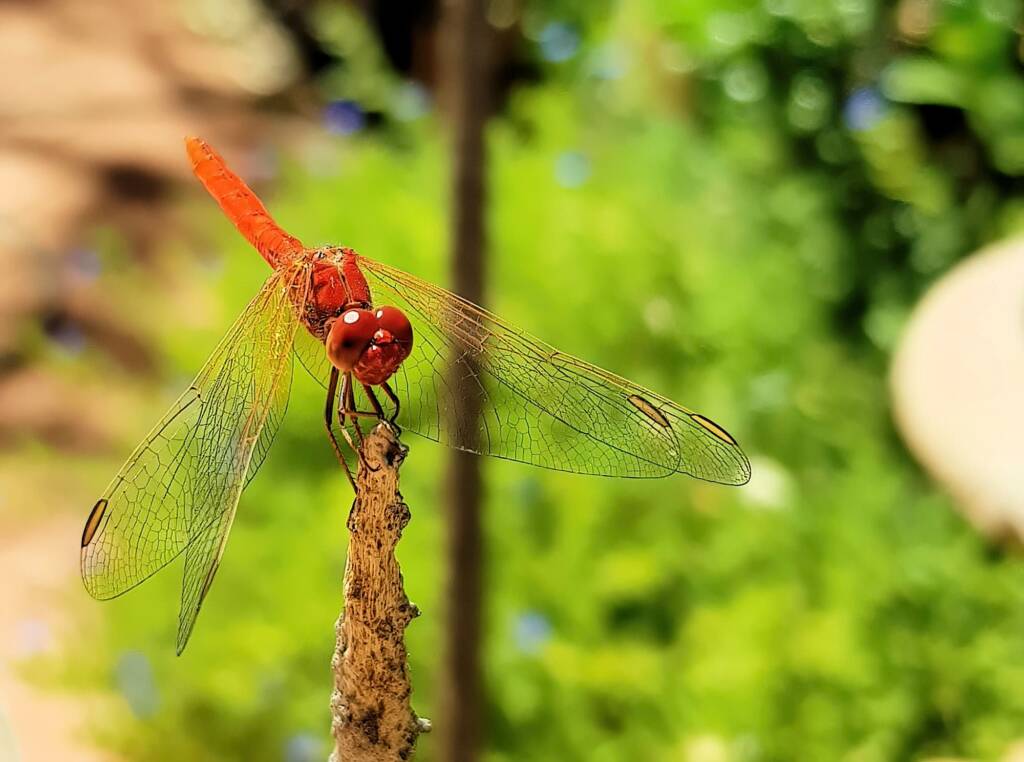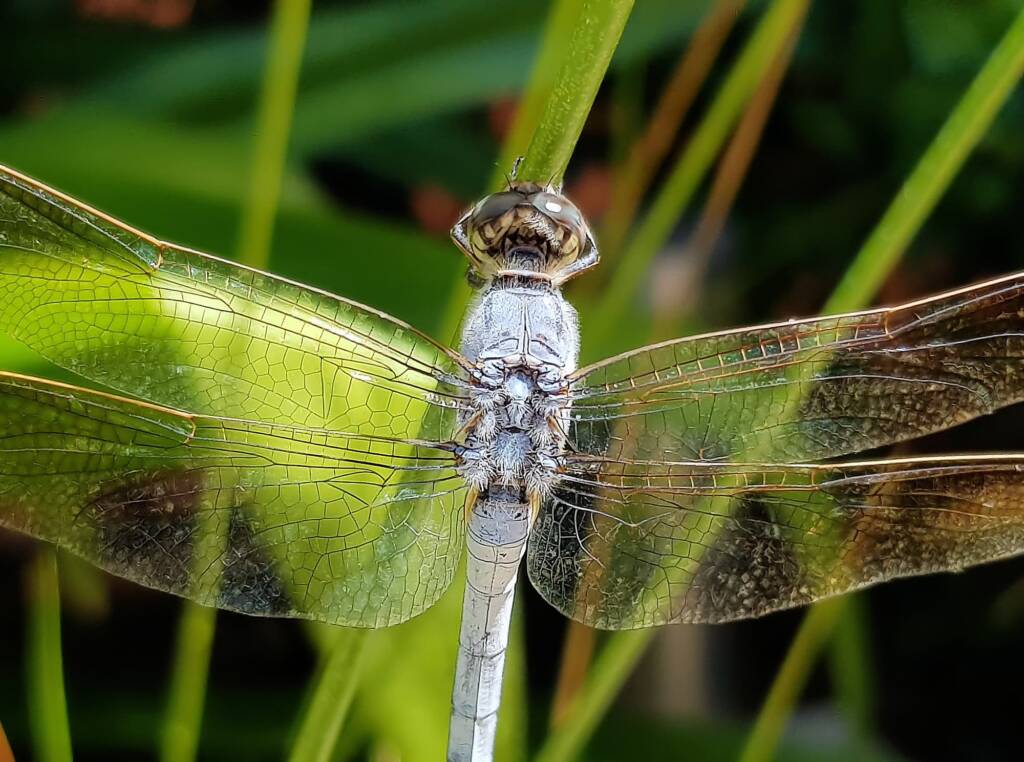Dragonflies & DamselfliesDragonfly or Damselfly? Sex Lives and Dragonflies Damselflies Diplacodes haematodes Hemicordulia tau Orthetrum caledonicum Orthetrum migratum Orthetrum villosovittatum
The dragonfly and damselfly are not the same insects, but they are related. Both belong to the order Odonata, that is an order of flying insects that includes the commonly named dragonflies (suborder Anisoptera) and damselflies (suborder Zygoptera). Within these suborders, there are more species of dragonflies than damselflies.
These two common groups are distinguished in that the dragonflies, placed in the suborder Anisoptera, are usually larger, with eyes together and wings that are up or out from the body when at rest, whilst the damselflies, suborder Zygoptera, are usually smaller with eyes placed apart and wings along the body when at rest.


Pruinescence
is a condition where a “bloom” appears on an insects cuticle, caused by wax particles that often masks the underlying colouration of the insect, giving it a dusty or frosted appearance.
This pruinescence is commonly white to pale blue in colour,m although it can be grey, pink, purple or red. The colours may be produced by Tyndall scattering of light. When pale in colour, pruinescence often strongly reflects ultraviolet.
This condition appears in many species of Odonata, particularly damselflies of the families Lestidae and Coenagrionidae, where it occurs on the wings and body. Among true dragonflies it is most common on male Libellulidae (skimmers).1
The chalky blue colour in the following male dragonfly is due to pruinescence. The adult males become more blue over time.

Did you know that in some cultures and beliefs, that it is considered lucky if a dragonfly lands on you, especially on your head.
- Scientific classification
- Kingdom: Animalia
- Phylum: Arthropoda
- Subphylum: Hexapoda
- Class: Insecta
- Informal: Pterygotes
- Order: Odonata
- Suborders:
- Anisoptera
- Zygoptera
Footnote & References
- Anisoptera, Atlas of Living Australia, https://bie.ala.org.au/species/https://biodiversity.org.au/afd/taxa/cd6aabf8-f161-4357-bc70-41dfc88bfa24
- Zygoptera, Atlas of Living Australia, https://bie.ala.org.au/species/https://biodiversity.org.au/afd/taxa/672ca4f8-ace8-4283-8253-1019c8d86e63
- The damselflies and dragonflies of Australia, by David Hayes, 24 July 2017, Australian Geographic, https://www.australiangeographic.com.au/topics/wildlife/2017/07/list-the-damselflies-and-dragonflies-of-australia/
- Pruinescence, https://en.wikipedia.org/wiki/Pruinescence (last visited Feb. 25, 2022)
- erlandreflingnielsen’s Life List – Dragonflies and Damselflies, Erland Refling Nielsen, iNaturalist, https://www.inaturalist.org/lifelists/erlandreflingnielsen?taxon_id=47792
- Ze Frank Hilariously Narrates the Voraciously Full Lifecycle of the Insatiable Damselfly and Dragonfly, 5 Novembe 2018, https://laughingsquid.com/ze-frank-true-facts-damselflies-dragonflies/
Dragonflies & DamselfliesDragonfly or Damselfly? Sex Lives and Dragonflies Damselflies Diplacodes haematodes Hemicordulia tau Orthetrum caledonicum Orthetrum migratum Orthetrum villosovittatum
InsectsBees Beetles Blattodea Butterflies Coleoptera Cicada Crabronidae Diptera Dragonflies & Damselflies Formicidae Hemiptera Heteroptera (True Bugs) Mango Planthopper Moths Orthoptera Orthopteroid Processionary Caterpillar Stink Bugs, Shield Bugs and Allies Syrphidae Wasps Water Scorpion (Laccotrephes tristis) Witchetty Grub
